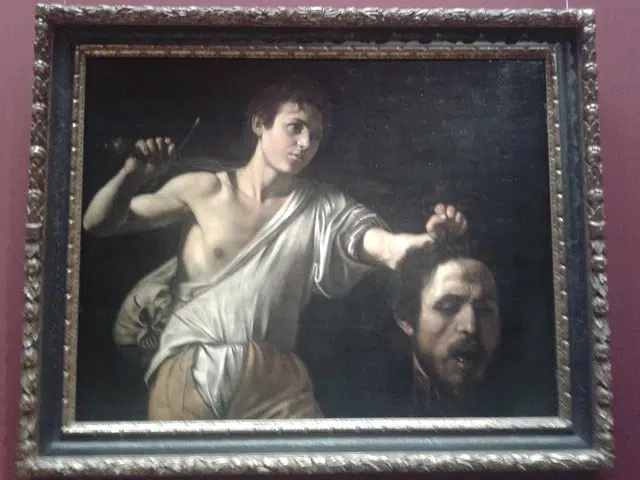
Caravaggio is among the references of chiaroscuro.
The first thing we have to explain about this term at hand is that it is a word that is juxtaposed. Yes, because it has been formed from the sum of two others: light and dark . That makes it come to define what would be a notable contrast of lights and shadows.
The concept of chiaroscuro is used in the field of painting to name the contrast that occurs between shadows and light in a work. It is a technique that uses these contrasts to highlight certain elements of the painting and to develop visual effects of modeling and relief .
Origins of chiaroscuro
Chiaroscuro emerged in the 16th century , within the framework of the artistic period known as Cinquecento . Italian and Flemish painters began to try this technique , which had its peak during the Baroque .
Caravaggio (1571-1610) was one of the great artists who used chiaroscuro. "The Flagellation of Christ" and "Death of the Virgin" are among his works that evidence the use of this technique. Rembrandt (1606-1669) also excelled with his handling of light and shadow in paintings such as "The Young Rembrandt" , "The Philosopher in Meditation" and others.
The radicalization of chiaroscuro was called tenebrism . In this style , promoted by artists such as José de Ribera , El Greco and Caravaggio himself, the contrast between light and shadow is very marked.

Rembrandt is part of the group of painters who dabbled in chiaroscuro.
Some emblematic paintings
In the same way, we cannot ignore another series of paintings that, in one way or another, use this chiaroscuro technique. We are referring to some like the following:
-«Christ in the house of Martha and Mary» by Diego Velázquez. It dates from the year 1618 and is part of the Sevillian phase of the aforementioned painter. It is also a perfect mix between religious and genre painting. It is currently in the National Gallery in London.
-"Descent" of Christ by Rubens. It is a work from 1612 and is the second part of a triptych created by the aforementioned artist. Today it is kept in the Cathedral of Antwerp (Belgium) and was made by him as a commission from a brotherhood of teachers.
-«Night Watch» by Rembrandt. This painting, one of the most important of his entire career. It was made between 1640 and 1642 and can be admired in the Rijksmuseum in Amsterdam. It is an oil painting on canvas measuring 359 centimeters x 438 centimeters.
-"Girl with a Pearl Earring" by Johannes Vermeer. Between 1665 and 1667, the creation of this painting, the great masterpiece of its author, took place, which today can be seen in the Mauritshuis in The Hague.
Chiaroscuro in other arts and in colloquial language
Beyond painting, chiaroscuro also reached woodcut engraving . Known in this case specifically as chiaroscuro , its development required the use of various plates to color the images. It should be noted that, over the years, chiaroscuro burst into cinema .
In colloquial language, the idea of chiaroscuro is usually used with reference to contradictions or competing issues . For example: "The proposal is interesting, but it has chiaroscuros" , "He is a man with chiaroscuros: sometimes he is very nice, but in other situations he becomes parsimonious and distant."
